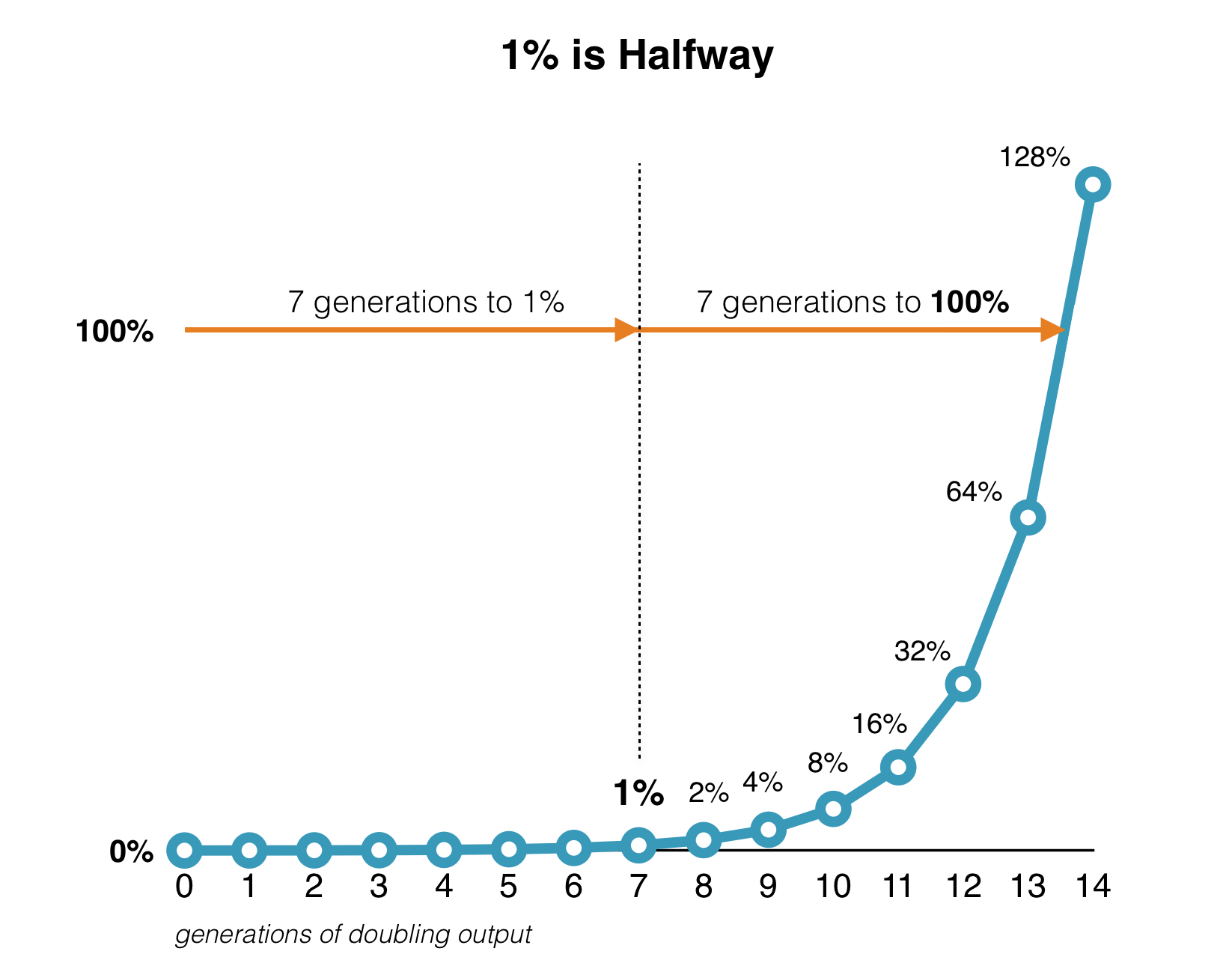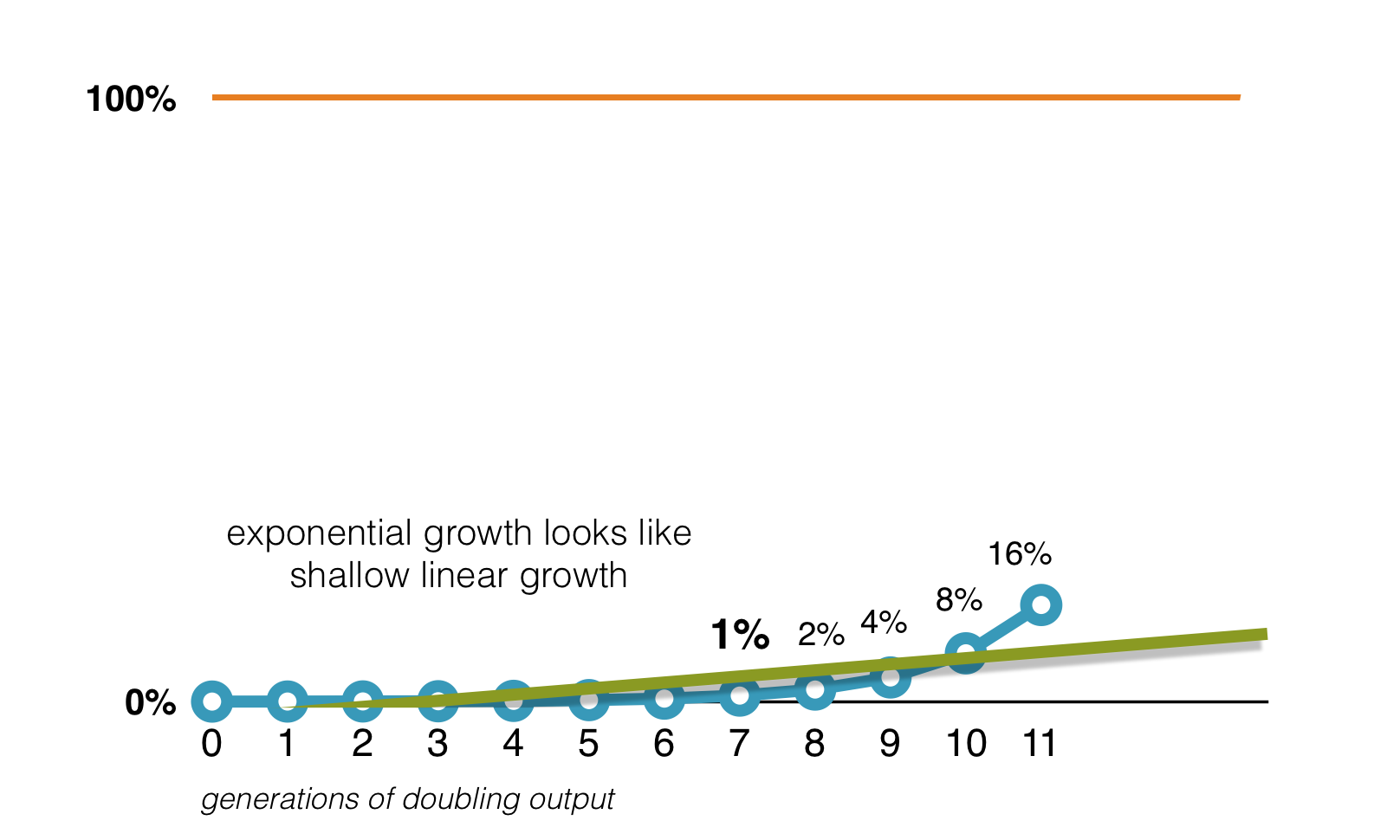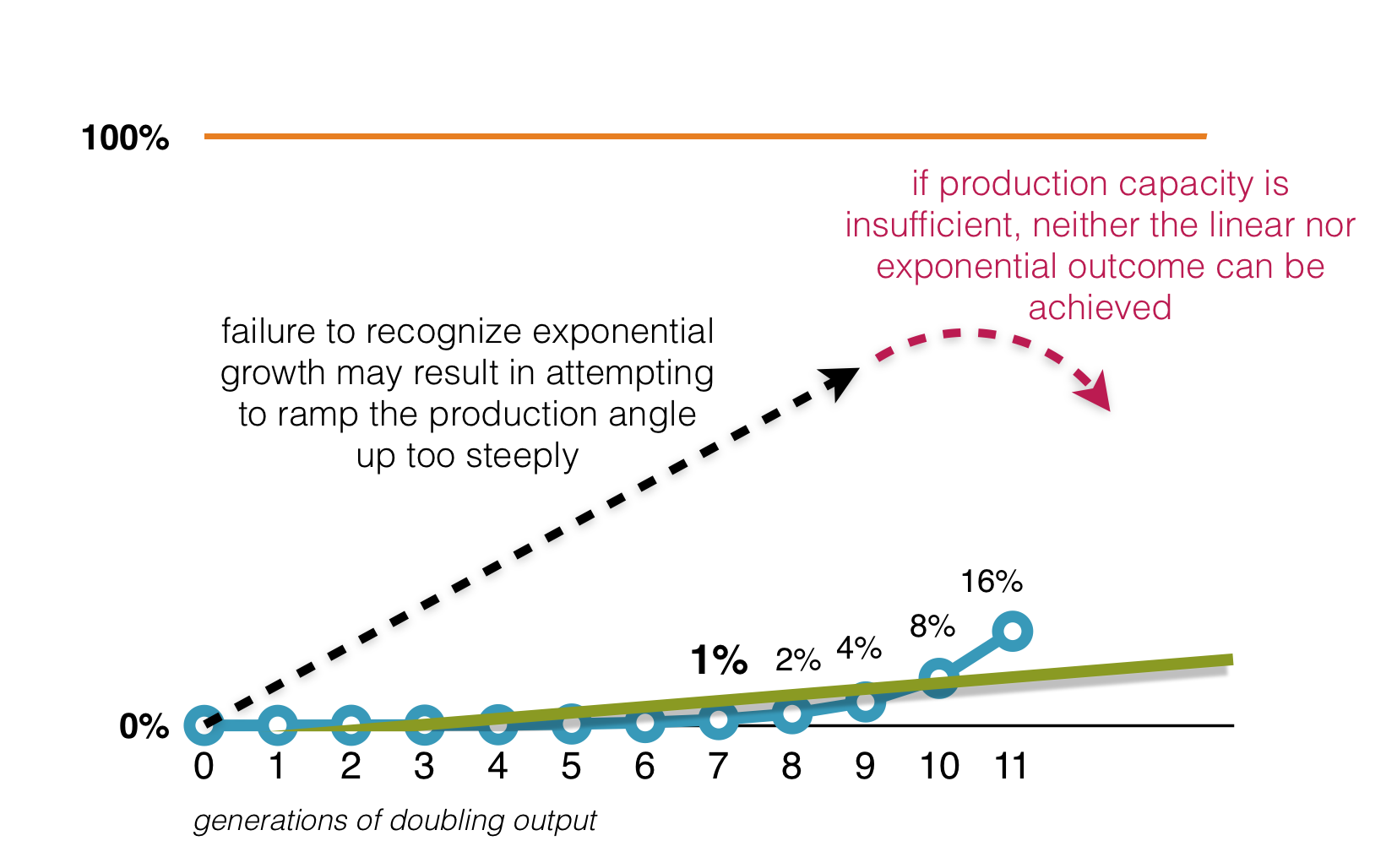1% is Halfway
In an exponential progression (doubling every generation), the halfway point is 1%.

In 1990, the Human Genome Project was launched with the aim of fully sequencing a single human genome. Estimates called for the project to take fifteen years and cost about $6 billion. In 1997, however, halfway through the estimated time frame, just 1 percent of the human genome had been sequenced. Every expert labeled the project a failure, pointing out that at seven years for just 1 percent, it would take seven hundred years to finish the sequencing. Craig Venter, one of the principal researchers, received calls from friends and colleagues imploring him to stop the project and not embarrass himself further. “Save your career,” he recalls them saying. “Return the money.”
When Ray Kurzweil was asked his perspective, however, his view of the “impending disaster” was quite different. “1 percent,” he said. “That means we’re halfway done.” What Kurzweil got that no one else did was that the amount sequenced was doubling every year. 1 percent doubling seven times is 100 percent. Kurzweil’s math was correct, and in fact the project was completed in 2001, early and under budget. The so-called experts had missed the end point by 696 years.
source: Exponential Organizations – Ismail, et al. (2014), ch. 1.
Here’s the math:
| generation | % complete |
|---|---|
| 0 | 0.007% |
| 1 | 0.013% |
| 2 | 0.026% |
| 3 | 0.052% |
| 4 | 0.104% |
| 5 | 0.208% |
| 6 | 0.416% |
| 7 | 0.832% |
| 8 | 1.664% |
| 9 | 3.328% |
| 10 | 6.656% |
| 11 | 13.312% |
| 12 | 26.624% |
| 13 | 53.248% |
| 14 | 106.496% |


#mathematics #strategic #complexity #systems
see also: